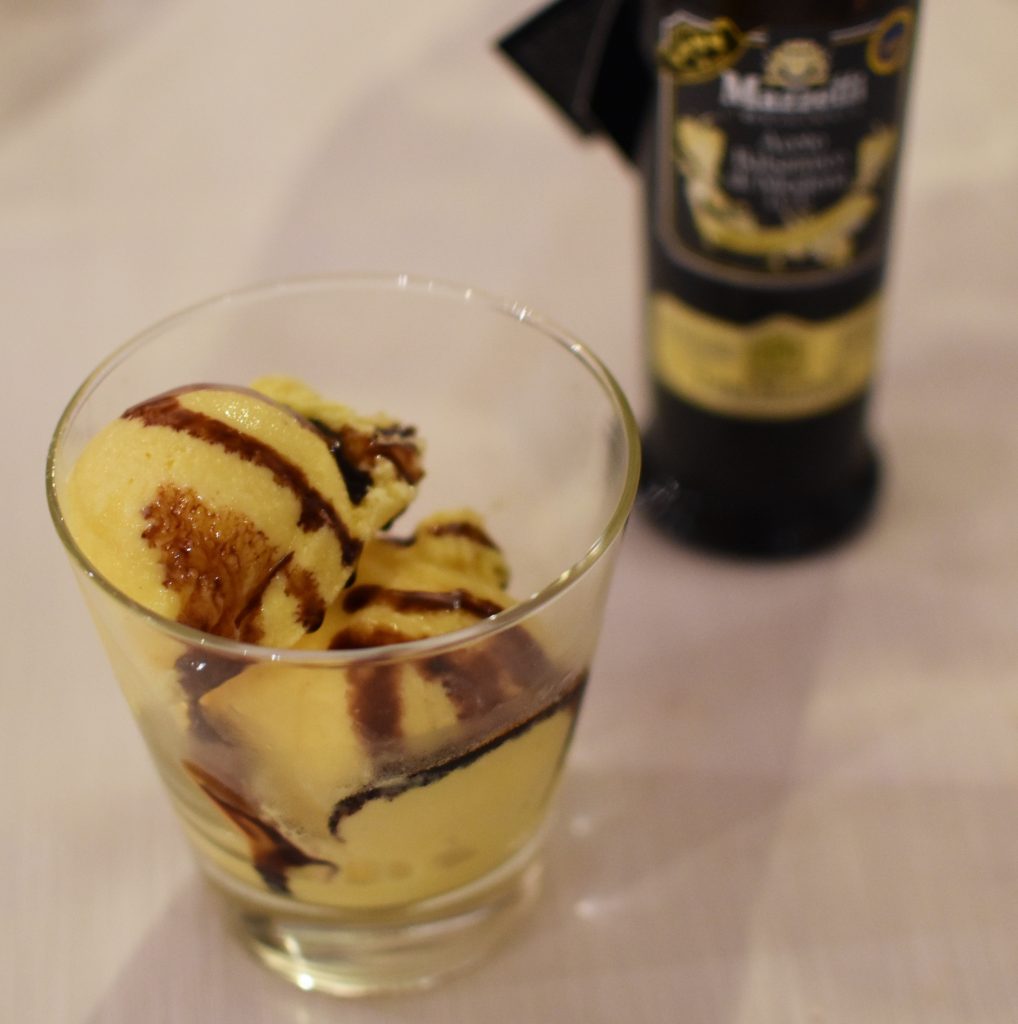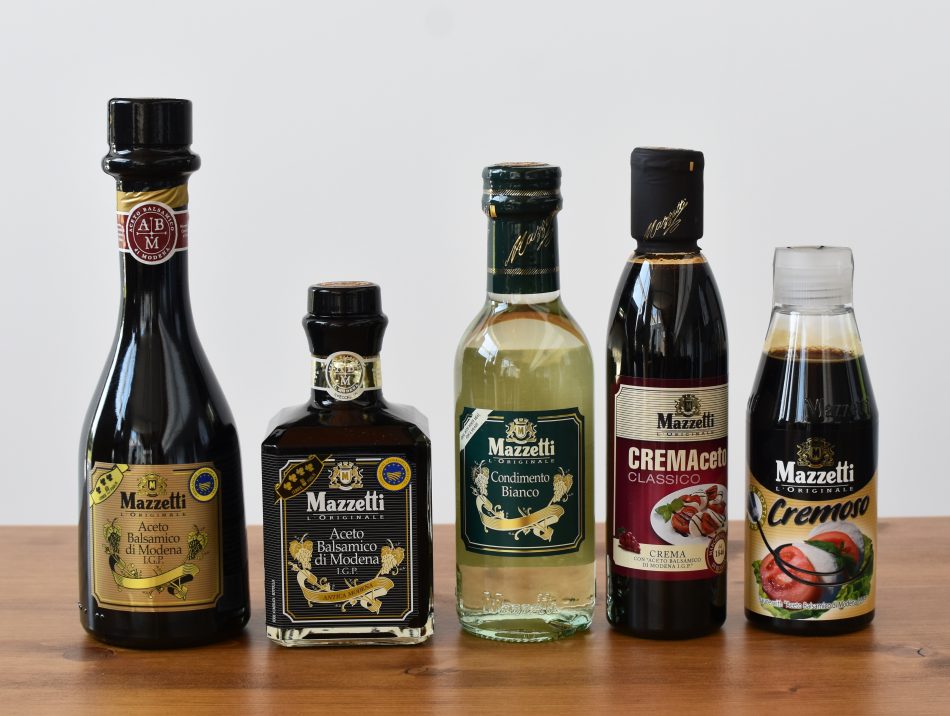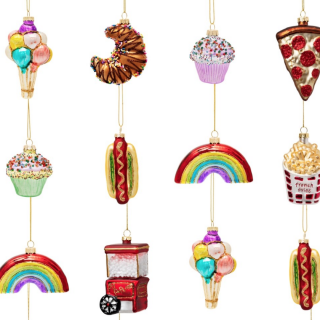I think many people know too little of Balsamic Vinegar, and for that reason also don’t use it often. And that’s a shame because Balsamic Vinegar is a beautiful product that combines easily with many ingredients and can add a lot of flavor to your dish. On this page I’m telling you everything you need to know about balsamic vinegar. So if you’re wondering what Balsamic Vinegar is made of, how it’s made or how you can use it in dishes: this is the page for you!
What is Balsamic Vinegar made of?
Balsamic Vinegar is made from grapes; not from basil as I used to think. To be more specific, balsamic vinegar is made from grape must. They make a grape juice of white grapes that have just been harvested and then they cook the grape juice to grape must. In this way it reaches a minimum sugar level of 30% and it prevents the grape juice from fermenting into wine. So there’s no alcohol in Balsamic Vinegar even though it’s also made from grape juice.
The high-quality balsamic vinegar is made from 100% grape must, and the more affordable ones are made with a mixture of grape must and wine vinegar.
Where does Balsamic Vinegar come from?

Balsamic Vinegar is only made in a very specific region on earth. It comes from Italy and is made in the Reggio Emilia region and in or around the city of Modena to be more specific. They’ve been making balsamic vinegar since roman times. In the beginning just to prevent the grapes from turning into wine and later they discovered that only the grape must from this region has such a delicate taste.
If the name Modena or Reggio Emilia is in the name of the balsamic, it means it must be produced there. The name is protected by the European Union.
Which Balsamic Vinegar to choose?

It can be quite difficult if you’re standing in the supermarket to choose the right balsamic vinegar. You might not know what the names and labels mean or you might not know which balsamic vinegar to use for which purpose. I’m here to help you out!
On most of the balsamic vinegar’s labels you’ll find a leaf classification. A bottle can have 1, 2, 3 or 4 leaves. In general the more leaves a bottle has, the better it is. This is because there’s less and less wine vinegar mixed in, the quality of the ingredients is higher and it’s aged longer.
This qualification system is introduced by the Italian Association of Balsamic Tasters (AIB) in cooperation CSFA (a well reputed sensory analysis center).
Each leaf stands for a different flavor and has a different way of best using it.
1 leaf
Balsamic Vinegar with 1 leaf is light in flavor and consistency. It’s sweet and zesty. It makes a good salad dressing.
2 leaves
Balsamic vinegar with 2 leaves is round and spirited. It’s brisk yet vibrantly balanced. This balsamic vinegar is great for grilled meat and vegetables.
3 leaves
Balsamic vinegar with 3 leaves has a smooth, full bodied taste. It has a polished finish with tangy accents. You can use balsamic vinegar with 3 leaves for sauces, fish and meat.
4 leaves
Balsamic vinegar with 4 leaves is superbly lush and intense. It’s syrupy with complex flavors and a heavy aroma. It’s great for more exclusive recipes, Parmesan cheese and desserts with strawberries or vanilla ice cream.
Traditional Balsamic Vinegar of Modena DOP
Besides the regular balsamic vinegars you also have the Traditional Balsamic Vinegars of Modena with DOP status. DOP stands for Denominazione di Origine Protetta; so it’s protected designation of origin. These balsamic vinegars are the best you can get. It’s made with lambrusco and trabbiano grapes. And what makes the quality so high is that it’s aged for at least 12 years, 18 years or even 25 years. It’s aged in several wooden barrels, starting with a relatively big one and getting smaller and smaller. The barrels are made from different kinds of wood to give a rich and complex flavor. They use a maximum of 5 different kinds of wood, like oak, cherry and chestnut.
No matter which brand made them, the always come in the same shaped bottle as that’s legally approved.
You might think these bottles are expensive at first but when you realize that for 1 liter of 25 year old balsamic vinegar, 600 kilos of grapes is used and that the proces took 25 years, it makes sense that this product is precious. It’s worth about €1.000,- per liter, so a small bottle costs around €100,-.
How to use balsamic vinegar?

Most people will know balsamic vinegar as a salad dressing. And rightfully so, it gives a lot of flavor to your salad. But there are many more ways you can use balsamic vinegar. It goes great with everything grilled; from stone fruits to vegetables and from meat to fish. Everything that comes from your barbecue can use a drizzle of balsamic vinegar.
It also goes great with cheese. Just poor it in a small bowl and serve it with your cheese board, or sprinkle it over your dishes with cheese like stuffed portobellos with mozzarella.
And I absolutely love it with strawberries and/or vanilla ice cream.












Pingback: My trips of 2019 - Anne Travel Foodie
Pingback: What Is The History Of Balsamic Vinegar? – Almazrestaurant
Pingback: What Is The Difference Between Red Wine Vinegar And Balsamic Vinegar? – Bescord
Pingback: Can You Get Drunk On Balsamic Vinegar? – Bescord
Pingback: Does all balsamic vinegar taste the same? – AnswerParadise.net
Pingback: De beste delicatessenwinkels in Tilburg - Anne Travel Foodie
Pingback: Melanzane met citroenricotta - Anne Travel Foodie
Pingback: Op de basilicumvelden van Grand’Italia - Anne Travel Foodie
Pingback: De leukste dingen om te doen in Hoogstraten, België - Anne Travel Foodie
Pingback: Everything you need to know about Pesto - Anne Travel Foodie
Pingback: Salade met geitenkaas, avocado en aardbei - Anne Travel Foodie